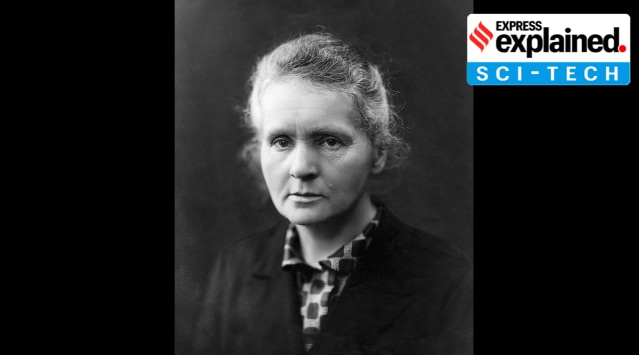Credited with achievements such as winning the Nobel Prize twice in two different fields of science, first in Physics and then Chemistry — a feat yet to be replicated more than a century later — here is why Curie is considered one of the most prominent scientists of all time, and what her success has come to mean for women in the field.
Early life and education
Born Marya Sklodowska on November 7, 1867, in Russia-occupied Poland, Curie’s life saw its share of tragedy and trials, accompanied by great perseverance on Curie’s part. Though her parents were both teachers; their employment was precarious, according to a Nobel biography of Curie. As a result, the family was constantly moving and poverty could only barely be escaped.
When she was 11, Curie’s mother died of tuberculosis and her oldest sister of typhus. From the age of 17, for six years, Curie worked as a governess and tutor, while studying in her spare time. She somehow completed her early education, even attending a secret school for a while that was resisting Russian rule. At age 24, she enrolled at Sorbonne University in Paris, France, one of the few places that admitted women. She could not go to the University of Warsaw back home, as the Russian government prohibited women from attending university anywhere in its empire, states the Nobel website.
In Paris, the lack of money and the difference in training from her French peers led to a period where Curie completely devoted herself to her studies in order to catch up, according to a study in the Harvard Business Review. It paid off, because Curie eventually received degrees in Physics and Mathematics, and her storied career took off.
How Marie Curie changed what we knew about radiation
Curie decided to do her thesis on radiation, recently discovered in uranium by Henri Becquerel. Another scientist she admired was Pierre Curie, whose lab she worked in. The two got married in 1895 and also formed a formidable work partnership.
According to the Nobel website, Curie found that an ore containing uranium was far more radioactive than could be explained by its uranium content. This led her and her husband Pierre Curie to discover a new element that was 400 times more radioactive than uranium. In 1898 it was added to the Periodic Table as polonium, named after Curie’s birth country of Poland.
Story continues below this ad
For this research in “radiation phenomena,” Curie became, in 1903, the first woman to receive a Nobel Prize. While French academics originally proposed only her husband and Henri Becquerel, often dismissing Marie as mainly an assistant to her husband, Pierre insisted that his wife share the honour.
“Then Curie discovered an even more radioactive element, radium, and made the discovery that radiation wasn’t dependent on the organisation of atoms at the molecular level but on something happening inside the atom itself. The atom was not, as scientists believed at the time, inert, indivisible, or even solid,” according to Nobel.
After Pierre died in 1906 due to an accident, Curie continued the work on her own. In 1911, she won the Nobel Prize in Chemistry, “in recognition of her services to the advancement of chemistry by the discovery of the elements radium and polonium, by the isolation of radium and the study of the nature and compounds of this remarkable element.”
The Nobel biography adds that the Curies did not “fully appreciate” the danger of the radioactive materials they handled and both were constantly ill from radiation sickness, and Curie’s death in 1934, at age 66, was likely caused by radiation exposure. A few of her books and papers are still so radioactive that they are stored in lead boxes. “It seems fitting that Curie left a scientific legacy that is literally untouchable,” says the Nobel website.
Legacy and paving the way
Story continues below this ad
Curie promoted the use of radium to treat diseases and during World War I, assisted by her daughter Irene (a future Chemistry Nobel winner herself), she personally volunteered for the work, as per The Smithsonian Magazine.
It also states how instead of accepting a widow’s pension, Marie took over Pierre’s teaching position at the Sorbonne, becoming the first woman to teach there. The same article speaks of Curie’s legacy as an inspiration with one example: “The physicist Rosalyn Yalow, in an essay she wrote at the time of winning her own Nobel Prize in 1977 for research involving radioactive compounds, said that Curie was her inspiration.”
Countless awards, hospitals and research institutes have been named after her. More substantially, the doors Curie opened have led to significant increases in the number of women involved in STEM, not by one action but simply through pioneering working in the field at a time when women were thought incapable of possessing intellectual capabilities for working in STEM.








































